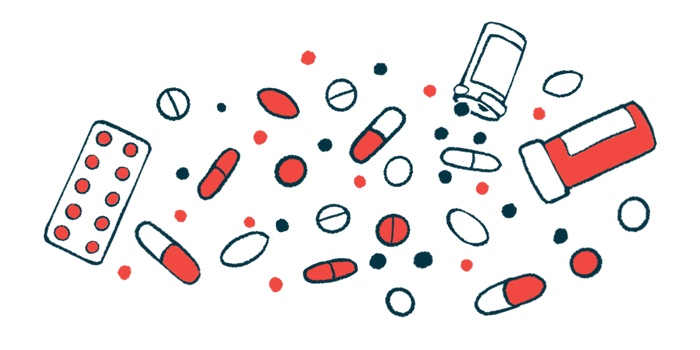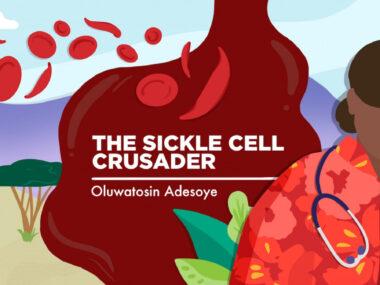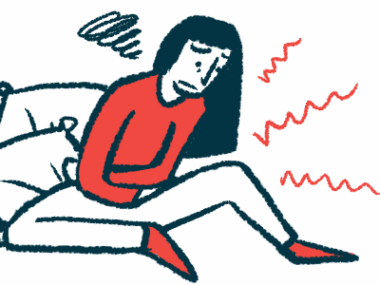Vitamin D boosts bone health, functional capacity in sickle cell
Researchers studied 42 SCD children to test safety, efficacy of supplementation
Written by |

Supplementing with vitamin D for six months safely improved bone health and functional capacity in children and adolescents with sickle cell disease (SCD), a study finds.
More studies are required to assess the “optimal dose, duration of supplementation, long-term [adverse events], and efficacy in different types of SCD, wrote the study’s researchers in “Safety and efficacy of monthly high-dose vitamin D3 supplementation in children and adolescents with sickle cell disease,” which was published in the European Journal of Pediatrics.
Studies have reported that young people and children with SCD have a deficiency in vitamin D, a nutrient found in some foods that plays a key role in bone health, which is tied to worse disease outcomes.
While prescribing vitamin D supplements may enhance SCD patients’ bone health, few studies have assessed the safety and impact of vitamin D on health-related quality of life (HRQoL) and hand grip strength in children and adolescents with SCD, leading researchers at Zagazig University in Egypt to assess these in a study (NCT06274203) that would also determine the safety and effectiveness of vitamin D3 supplementation, administered orally once a month, to children and adolescents with SCD against healthy age- and sex-matched children, who served as controls. The study enrolled 42 children with SCD (24 boys, 18 girls; mean age, 9) and 42 healthy controls. Half the children with SCD had more than two vaso-occlusive crises in the past year, and 14.3% had more than two episodes of acute chest syndrome.
Based on initial vitamin D levels, the children received a low dose of 100,000 international units (IU), a medium 150,000 IU dose, or a high 200,000 IU dose.
The study’s main goal was to assess changes in 25(OH) vitamin D3, a form of vitamin D called cholecalciferol, after six months of supplementation. Changes in bone mineral density (BMD), hand grip strength, and HRQoL also were assessed. All the SCD patients and 33 controls completed the study.
Six months of vitamin D supplementation
At the study’s baseline, the SCD patients had poorer growth status compared with the healthy children, as assessed by several parameters, including weight, height, and body mass index (BMI), a measure of body fat. They also had significantly lower hand grip strength and worse HRQoL. Four patients had a history of multiple fractures.
Median levels of 25(OH) vitamin D3 at baseline were markedly lower in the SCD group than the control group (16.5 vs. 28 ng/mL).
The participants adhered well to vitamin D supplementation, with an estimated compliance rate of 90% in SCD patients and 87% in controls.
After six months of supplementation, levels of vitamin D3 significantly increased in both groups, from 16.5 to 30.5 ng/mL in the SCD group and from 28 to 45 ng/mL in the control group.
At the end of the study, BMD also significantly improved, as assessed by dual-energy X-ray absorptiometry, an imaging technique where low-dose X-rays help measure bone density. Improvements in physical health and emotional well-being were also seen in SCD patients, who also had marked reductions in pain.
Improvements in hand grip strength and functional capacity, as assessed by the Childhood Health Assessment Questionnaire (CHAQ), were seen in both groups.
Researchers observed a positive correlation between vitamin D levels measured after six months of treatment and hand grip strength and pain score. A negative correlation was seen between vitamin D levels and the CHAQ score.
No clinical adverse events were reported and there was no need for new add-on medications during the study. Most SCD patients (81%) were being treated with the approved SCD therapy hydroxyurea and none changed their dose or treatment regimen during the study.
“Monthly oral high-dose vitamin D supplementation was safe, tolerated, and associated with higher vitamin D levels, improved [hand grip strength], and HRQL in both SCD children and healthy subjects as well as improved BMD scores in SCD patients,” the researchers wrote. “Further full-scale randomized controlled trials are required to formulate standardized guidelines for optimal dosing and to investigate the impact on clinically significant outcomes in children and adolescents with SCD and their healthy counterparts.”





